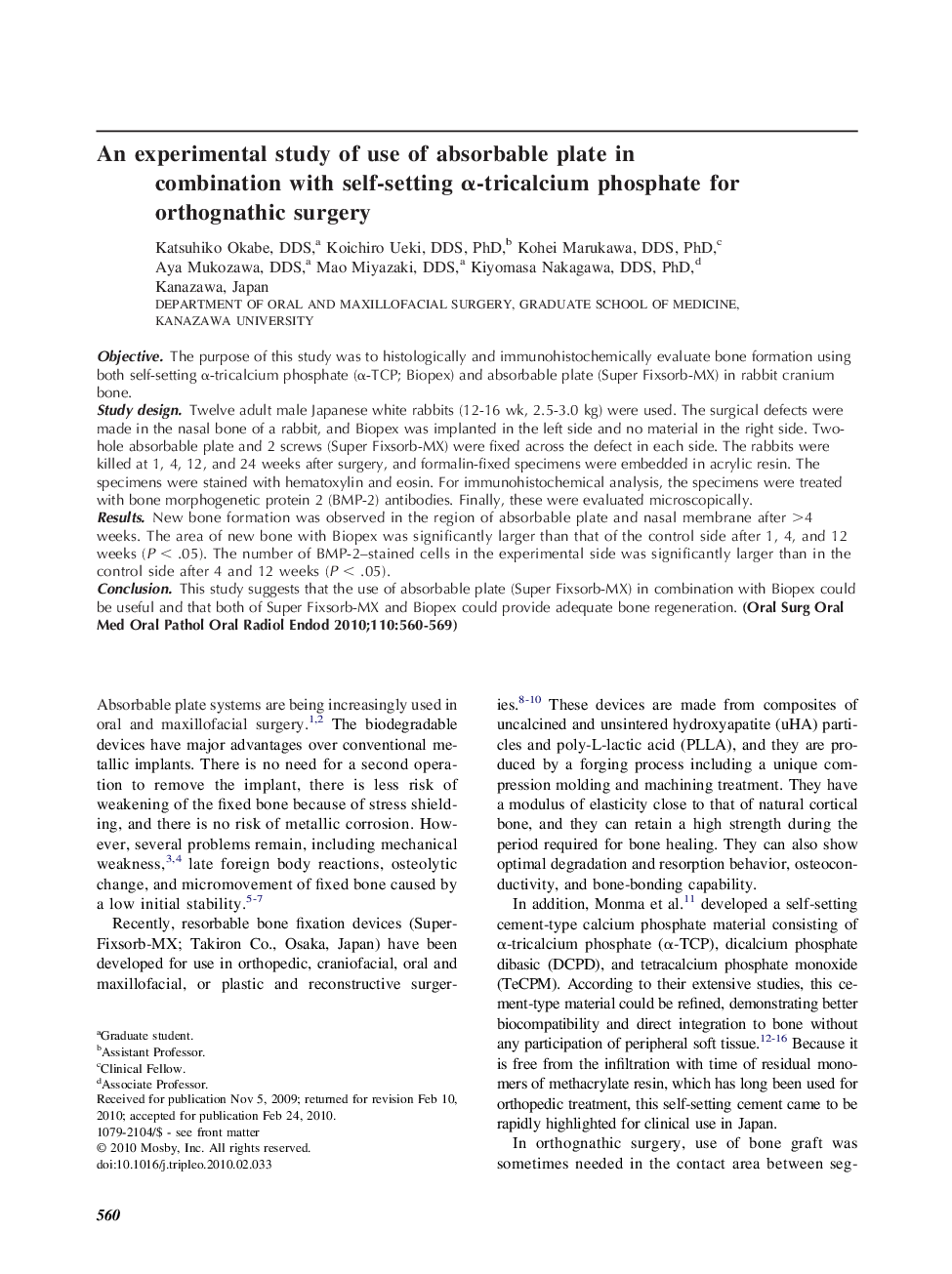| Article ID | Journal | Published Year | Pages | File Type |
|---|---|---|---|---|
| 3167448 | Oral Surgery, Oral Medicine, Oral Pathology, Oral Radiology, and Endodontology | 2010 | 10 Pages |
ObjectiveThe purpose of this study was to histologically and immunohistochemically evaluate bone formation using both self-setting α-tricalcium phosphate (α-TCP; Biopex) and absorbable plate (Super Fixsorb-MX) in rabbit cranium bone.Study designTwelve adult male Japanese white rabbits (12-16 wk, 2.5-3.0 kg) were used. The surgical defects were made in the nasal bone of a rabbit, and Biopex was implanted in the left side and no material in the right side. Two-hole absorbable plate and 2 screws (Super Fixsorb-MX) were fixed across the defect in each side. The rabbits were killed at 1, 4, 12, and 24 weeks after surgery, and formalin-fixed specimens were embedded in acrylic resin. The specimens were stained with hematoxylin and eosin. For immunohistochemical analysis, the specimens were treated with bone morphogenetic protein 2 (BMP-2) antibodies. Finally, these were evaluated microscopically.ResultsNew bone formation was observed in the region of absorbable plate and nasal membrane after >4 weeks. The area of new bone with Biopex was significantly larger than that of the control side after 1, 4, and 12 weeks (P < .05). The number of BMP-2–stained cells in the experimental side was significantly larger than in the control side after 4 and 12 weeks (P < .05).ConclusionThis study suggests that the use of absorbable plate (Super Fixsorb-MX) in combination with Biopex could be useful and that both of Super Fixsorb-MX and Biopex could provide adequate bone regeneration.
